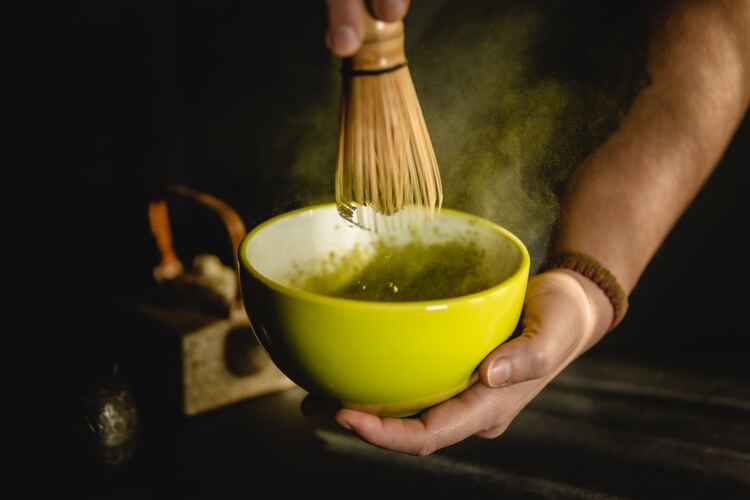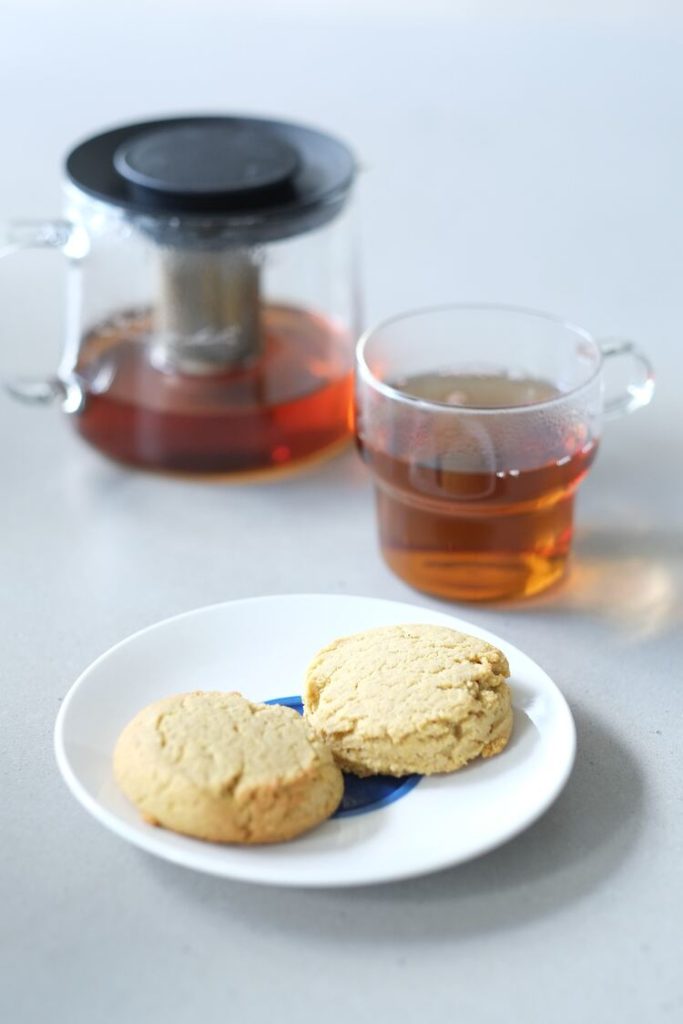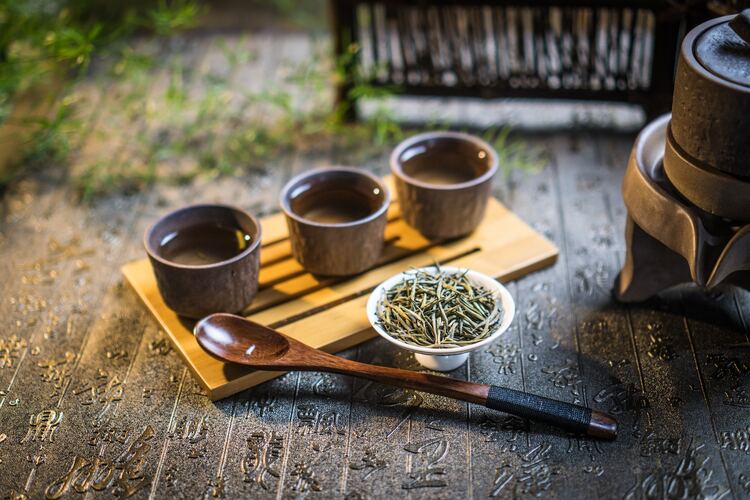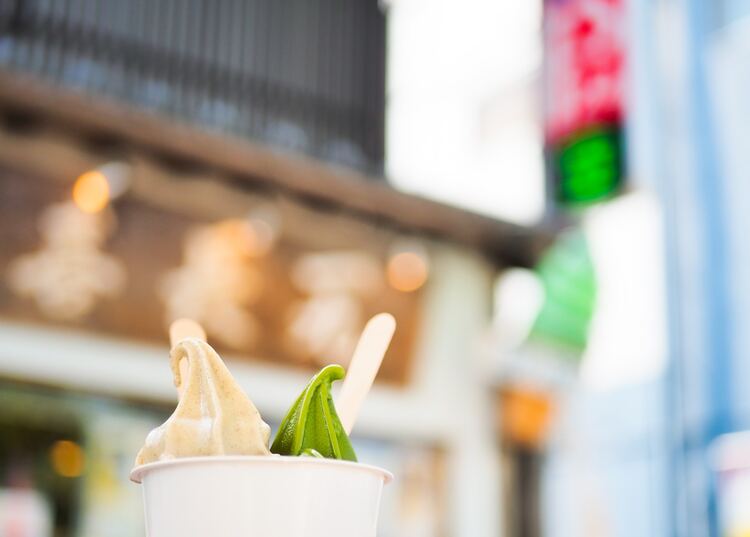Hojicha vs Matcha. What a wonderful face-off! In this article, we will discuss how these two popular green tea varieties assent and differ.
As tea enthusiasts, we always seek new and exciting flavors to explore. In recent years, there has been a surge in the popularity of Japanese green teas, particularly Hojicha and Matcha. Although they come from the same Camellia sinensis plant, they offer distinct flavors and unique nutritional profiles that make them highly sought after.
Get ready since we will explore the key differences between Hojicha and Matcha, from their processing methods to their flavor profiles, color, and health benefits. This comparison will help you understand the delightful complexities of these two beverages and, perhaps, gain a newfound appreciation for Japanese green tea culture.
Please note: This article contains affiliate links, meaning I may earn a commission if you make a purchase by clicking a link. Of course, this comes at no extra cost to you and helps me to keep offering solid information to readers.

Hojicha vs Matcha: Hojicha Overview
We truly appreciate the depth and variety of flavors that different types of green tea have to offer. One such delicious and unique variant is Hojicha. Let’s explore its origin, production process, and distinct flavor profile.
Origin and Production
Originally from Kyoto, Japan, Hojicha is a roasted green tea that has been gaining popularity for its particular taste and aroma. Unlike other types of green tea, Hojicha is roasted in a porcelain pot over charcoal at high temperatures, which gives it a distinctive reddish-brown color.
The process begins using Sencha, Bancha, or Kukicha green tea leaves. The leaves are then roasted, which reduces their caffeine and catechin content. This characteristic makes Hojicha a great choice for those who are sensitive to caffeine or seeking a low-caffeine beverage option.
Note: If you need more insight into tea lingo, Sencha is a tea prepared with the first leaves plucked during harvest season. This is known as the first flushing (this occurs in early spring). Bancha is a tea prepared with leaves plucked during the second, third, and even fourth flushings (later during the harvest season). Kukicha is a tea prepared with both the leaves and twigs (stems) of the tea plant.
Flavor Profile
While Matcha is known for its vibrant green color and umami taste, Hojicha has a unique flavor profile that sets it apart from other green teas. Its roasting process imbues it with a warm, toasty, and slightly sweet flavor reminiscent of roasted nuts or caramel.
When it comes to aroma, Hojicha entices us with its distinct notes of roasted chestnuts and smokiness. This comforting scent makes it an inviting choice, especially for those who are new to the world of green tea.
Bottom line: Hojicha stands out due to its roasting process, caffeine content, and distinctive flavor profile. It’s a wonderful and unique option for green tea lovers looking to expand their palate.

Hojicha vs Matcha: Matcha Overview
Matcha is a finely powdered green tea that is widely popular for its unique taste and numerous health benefits. Keep reading to learn more about its origin, production, and flavor profile.
Origin and Production
Matcha originally comes from Japan, deeply rooted in the country’s culture for centuries. It is primarily cultivated in the regions of Uji, Nishio, and Shizuoka. The production process of matcha is meticulous, starting with the shading of the tea plants around 3 weeks before harvest. This practice increases the chlorophyll content and results in the vibrant green color we associate with matcha.
After the leaves are harvested, they are steamed, deveined, and carefully dried. This is followed by grinding the leaves using traditional stone mills. The resulting fine powder is then sifted and packed. This labor-intensive process is what makes high-quality matcha quite expensive compared to other types of tea.
Notice in the matcha-producing process the tea leaves are steamed. Applying heat stops the oxidation process, hence the vivid green color of the end product. Steaming tea leaves is one of the steps that separate Japanese tea from other teas produced worldwide (green tea leaves are pan-fired in other areas).
Flavor Profile
In terms of flavor, Matcha offers a distinct taste, often described as a balance between umami and mild bitterness. The umami (savory, almost meaty even though it is a vegetal product) flavor comes from the higher concentration of theanine, an amino acid that contributes to the tea’s relaxing effect. The mild bitterness can be attributed to the presence of catechins, known for their antioxidant properties.
Matcha’s quality and taste can vary depending on factors such as the tea plant cultivar, growing region, and processing techniques. High-quality matcha tends to have a vibrant green color, smooth texture, and a rich, creamy mouthfeel, while lower-grade matcha might appear duller in color and have a more astringent taste.

Health Benefits Comparison
Now, we will compare the health benefits of Hojicha and Matcha. Both teas have their own unique advantages, so let’s dive in and explore them.
Regarding antioxidants, Matcha stands out as it contains the highest concentration of catechins among all types of green tea. Catechins are a type of antioxidant that helps protect our bodies from free radicals and promote overall health. On the other hand, Hojicha contains fewer catechins compared to Matcha due to the roasting process it undergoes.
We should also consider the L-theanine content in both teas. L-theanine is an amino acid that promotes relaxation and reduces stress. Matcha boasts a higher concentration of L-theanine, thanks to its shaded cultivation process. While Hojicha does contain L-theanine, the roasting process reduces its levels compared to other green teas.
Now, let’s talk about the caffeine content. Matcha has a higher caffeine content than Hojicha, making it a more energizing option. However, if you are looking for a low-caffeine option or a soothing drink to enjoy later in the day, Hojicha may be the better choice for you.
Bottom line: Matcha offers higher levels of antioxidants and L-theanine, while Hojicha has a lower caffeine content. It’s up to you to decide which tea suits your needs and preferences, but both are excellent choices for a healthy and flavorful beverage.
Preparation Methods
I hope you are getting excited about these two tea types! Now that we know more about them, it is time to discuss the preparation methods for both Hojicha and Matcha.
Hojicha Brewing
Hojicha is typically brewed using hot water, following these simple steps:
- Measure 1 teaspoon of Hojicha tea leaves per 8 ounces (240 mL) of hot water.
- Heat the water to a temperature of around 200°F (93°C), which is slightly below boiling point.
- Place the tea leaves in a teapot and pour the hot water over the leaves.
- Let the tea steep for 30 seconds to 1 minute, depending on your taste preference.
- Strain the tea into your cup, leaving the tea leaves in the teapot.
- Enjoy your Hojicha!
Hojicha generally uses a higher water temperature and shorter steeping time than other green teas.
Also, let me mention we have presented the traditional brewing technique. As Hojicha gains popularity, you will find the tea in powders, latte mixes, and other novel forms.
Matcha Whisking
Matcha preparation is unique, requiring whisking the powder into a frothy drink. Here’s how to prepare this tea:
- Sift 1-2 teaspoons of Matcha powder into a tea bowl to remove any clumps.
- Heat water to about 175°F (80°C), which is cooler than the temperature used for Hojicha.
- Pour 2-4 ounces (60-120 mL) of hot water into the tea bowl with the Matcha powder.
- Using a bamboo whisk (Chasen), whisk the mixture in a zigzag motion for 15-30 seconds until a frothy layer forms on the surface.
- Your Matcha is ready to be enjoyed!
Knowing how to properly prepare both Hojicha and Matcha will allow you to experience and appreciate their unique flavors and aromas to the fullest.

Hojicha vs Matcha: Culinary Uses
Don’t get me wrong. Hojicha and Matcha are delicious options to consume as their traditional methods dictate. But, they are versatile as well. Because of that, we are providing some simple recipes below.
Hojicha Recipes
Since Hojicha has a more pronounced roasted flavor, it works incredibly well in recipes that call for a bolder taste. Here are a few of our favorite recipes featuring this tea:
- Hojicha Latte: Combine 1 teaspoon of Hojicha powder, 1 tablespoon of honey, and a little hot water in a mug. Mix well, then add warm milk and stir until combined. This creates a delicious, comforting beverage with a toasty twist.
- Hojicha Ice Cream: Mix 2 tablespoons of Hojicha powder with 1 cup of whole milk, ½ cup of granulated sugar, and 2 cups of heavy cream. Churn in an ice cream maker according to the manufacturer’s instructions for a unique frozen treat.
- Hojicha Roasted Almonds: Coat almonds in a mixture of Hojicha powder, melted butter, and a touch of salt, then roast in the oven at 350°F (175°C) for 15 minutes for a savory snack.
Matcha Recipes
Matcha’s vibrant green color and slightly sweet, earthy flavor make it a versatile addition to various dishes. Here are some of our favorite Matcha-infused recipes:
- Matcha Smoothie: Blend 1 teaspoon of Matcha powder with 1 cup of your favorite milk or milk substitute, 1 ripe banana, a handful of spinach, and a few ice cubes for a nutrient-packed breakfast or snack.
- Matcha Energy Bites: Mix 1 tablespoon of Matcha powder with 1 cup of rolled oats, ½ cup of almond butter, ¼ cup of honey, and 1 tablespoon of chia seeds. Roll into bite-sized balls and refrigerate for a portable, energy-boosting snack.
- Matcha White Chocolate Cookies: Incorporate 1 tablespoon of Matcha powder into your favorite white chocolate chip cookie recipe for a delightful green-hued treat perfect for sharing.

Selecting Quality Tea
When looking to buy these teas, it is crucial to pay attention to a few key factors. In that way, you can enjoy them in the best way possible.
Hojicha Tips
When choosing Hojicha, consider the following aspects:
- Origin: We recommend selecting tea that comes from reputable regions in Japan, such as Kyoto or Shizuoka, which are known for their quality tea production.
- Color: High-quality Hojicha has a reddish-brown hue, indicating it has been roasted properly.
- Aroma: The aroma should be pleasant, with a distinct roasted scent that is neither burnt nor overly grassy.
- Freshness: It is essential to check the packaging for a ‘best by’ date to ensure the tea’s freshness. Fresh Hojicha has a richer taste and aroma.
Matcha Tips
For selecting the best Matcha, keep these factors in mind:
- Origin: Tea from Uji, Kyoto, or Nishio, Aichi, are renowned for their quality Matcha production.
- Color: Look for a vibrant green shade, indicating a high chlorophyll content and proper shading during cultivation.
- Texture: Fine and smooth powdered texture ensures it will blend seamlessly into water or other liquids.
- Aroma: A quality matcha should have a fresh, sweet, and slightly grassy aroma, without any off-odor or mustiness.
- Freshness: Always check for a ‘best by’ date on the packaging, as fresh matcha has a more vibrant taste and flavor.
Hojicha vs Matcha: Buying Recommendations
We recommend visiting your nearest tea specialist to obtain high-quality products and deepen your tea knowledge. Besides, you may be able to try several tea brands before making a purchase decision.
Since we know not everybody has the time to stop by a local tea provider, here are our top recommendations (from online retailers):
Hojicha

Organic Japanese Hojicha – Yabukita Cultivar


Matcha
Numi Organic Tea Ceremonial Matcha

Jade Leaf Organic Matcha Green Tea Powder

Matcha DNA Green Tea Powder Culinary Grade

I hope you have enjoyed the article and learned something new. Alright, time to decide. Hojicha vs matcha, which one do you prefer? I have to admit I am on the Hojicha team. As a matter of fact, Hojicha is one of my favorite tea varieties.
Hojicha vs Matcha, what is your favorite?
More About Tea
What Does Green Tea Taste Like?
The Process of Making Green Tea